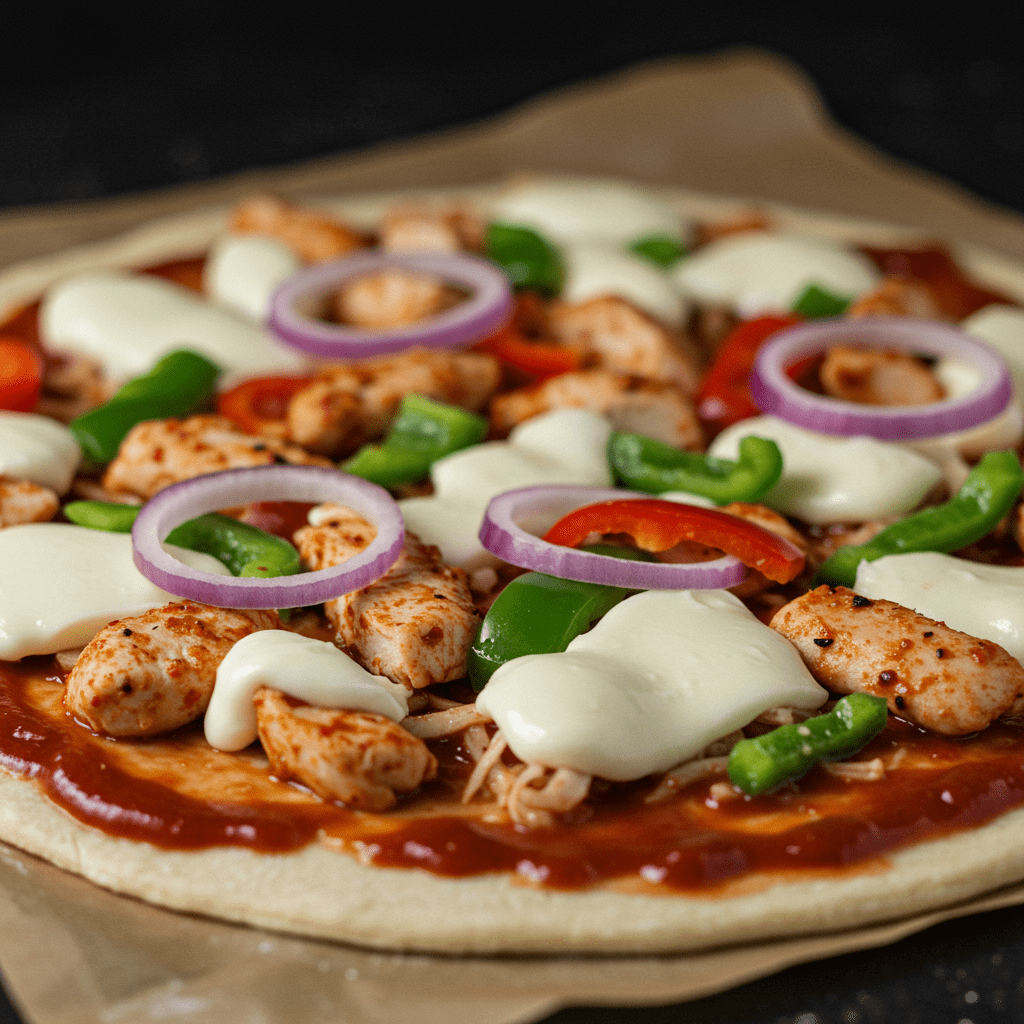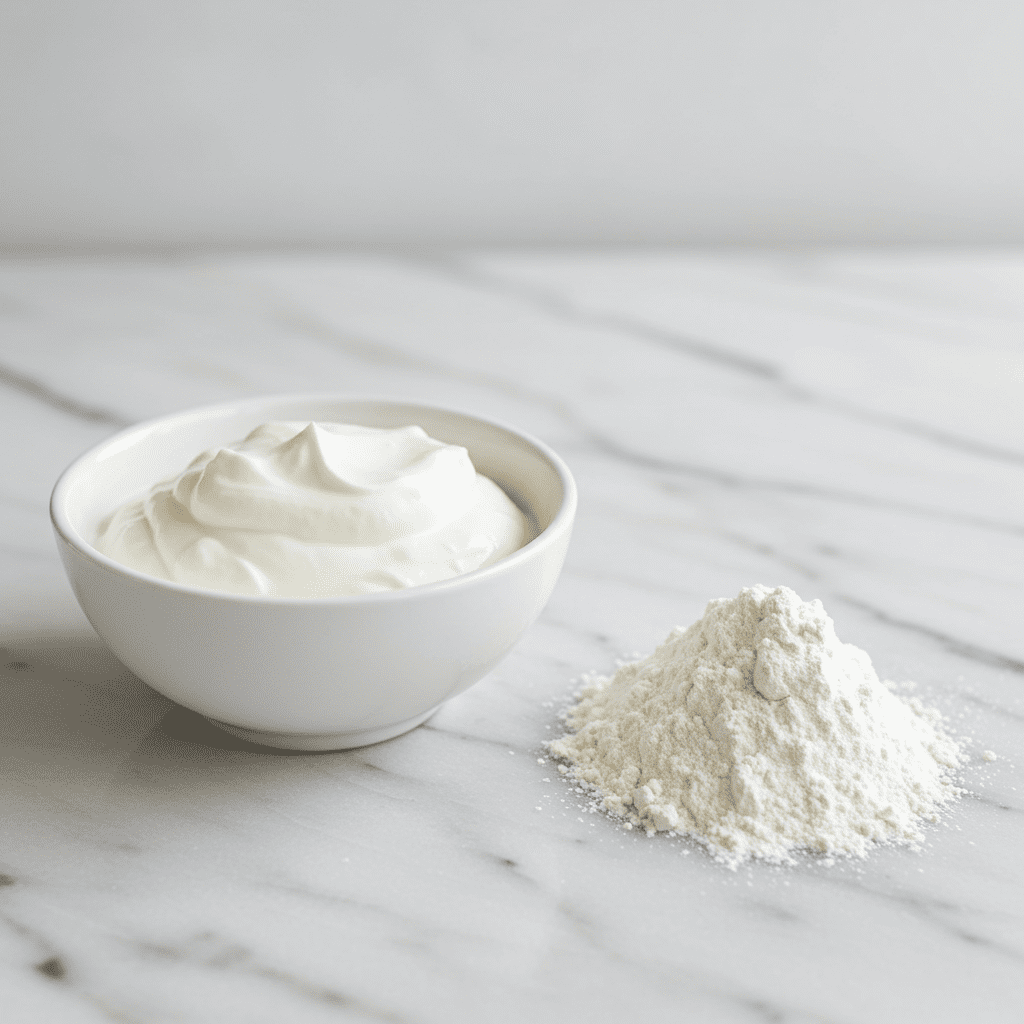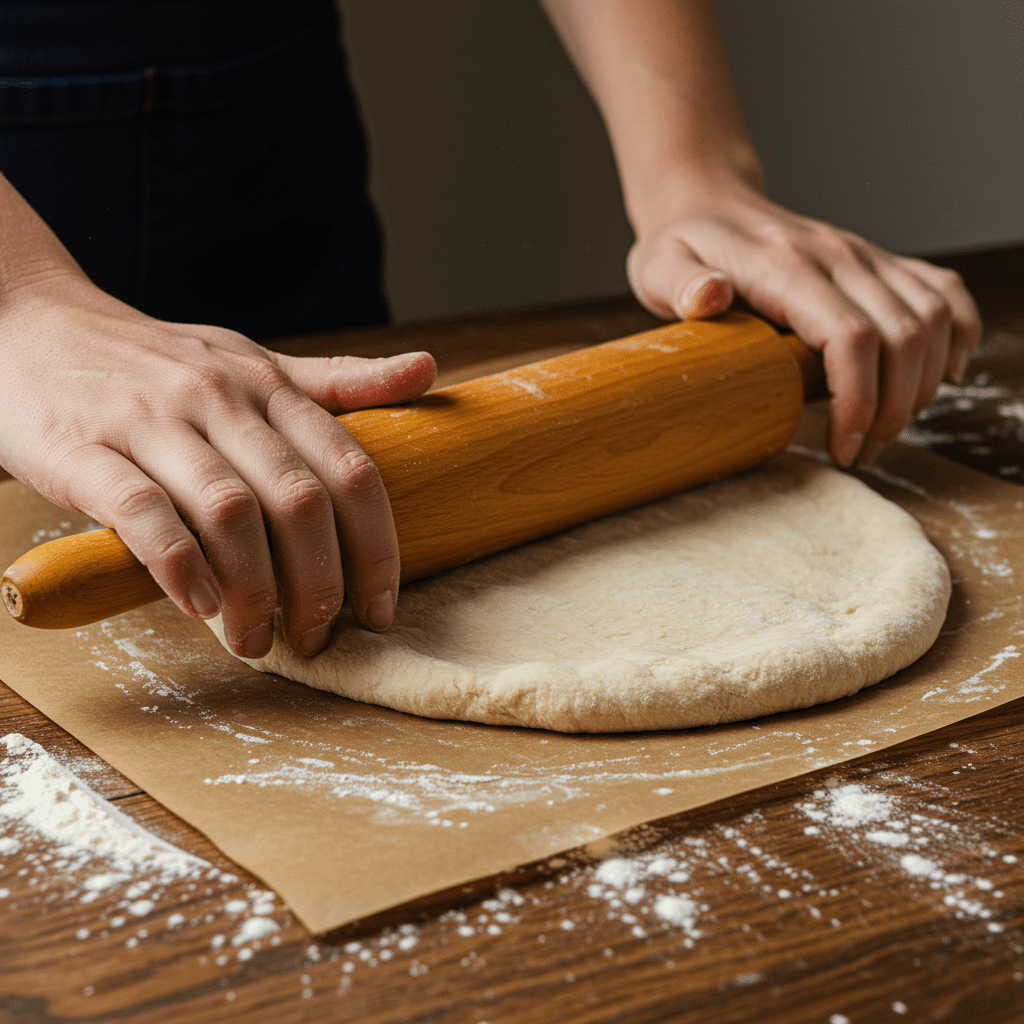How to Make a Delicious High-Protein Pizza at Home

We’ve all been there: the craving for a warm, cheesy, satisfying pizza hits, but the desire to stick to our health goals pulls us in another direction. What if you didn’t have to choose?
As a registered dietitian and wellness expert, I’m here to show you that pizza can absolutely be part of a balanced, protein-rich diet. This recipe isn’t about restriction; it’s about enhancement.
By swapping a traditional crust for a simple and brilliant two-ingredient dough, we’re boosting the protein to over 30 grams per serving. This means you’ll feel fuller, more satisfied, and you’ll be fueling your body with the nutrients it needs.
Get ready for a pizza night that leaves you feeling great.
- Why Does a High-Protein Pizza Keep You Fuller?
- The Two-Ingredient Dough That Changes Everything
- Your Simple Shopping List
- How to Make the Pizza Dough Step-by-Step
- Assembling and Baking Your Pizza
- Should I Use Greek Yogurt or Cottage Cheese for the Crust?
- Creative Topping Ideas to Keep Pizza Night Fresh
- Answering Your Top Questions
- Conclusion
Why Does a High-Protein Pizza Keep You Fuller?

The secret to this pizza’s satisfying power lies in its high protein content. As research from Harvard T.H. Chan School of Public Health highlights, protein is widely recognized as the most satiating macronutrient.
When you eat a protein-rich meal, your body increases the production of hormones like PYY and GLP-1, which signal to your brain that you’re full. This enhanced satiety is key to helping you manage overall calorie consumption.
Unlike a carb-heavy pizza that can lead to a quick spike and crash in blood sugar, the protein in this recipe helps stabilize energy levels, keeping you feeling satisfied and energized for hours.
The Two-Ingredient Dough That Changes Everything

The crust is the foundation of any great pizza, and this one is a nutritional powerhouse. It’s made from just two simple ingredients: self-rising flour and plain Greek yogurt (or cottage cheese).
The magic comes from the yogurt. The lactic acid in Greek yogurt reacts with the baking powder in the flour, tenderizing the gluten and creating a soft, slightly chewy crust without the need for yeast or long proofing times.
Greek yogurt is also a fantastic source of protein. A typical serving of Greek yogurt contains almost double the protein of regular yogurt.
As a dietitian, I love this hack for its simplicity and its powerful nutritional upgrade.
Your Simple Shopping List

Getting ready for pizza night is easy with these simple ingredients. You can find everything at your local grocery store.
- For the High-Protein Dough:
- Plain Greek Yogurt or Cottage Cheese: I recommend using a full-fat or 2% version for the best texture and flavor. Fage or Chobani are excellent choices.
- Self-Rising Flour: This is simply all-purpose flour with baking powder and salt already mixed in.
- For the Toppings:
- Pizza Sauce: Look for a brand with no added sugar, like Rao’s Homemade or Muir Glen.
- Shredded Chicken Breast: A rotisserie chicken is a fantastic time-saver, but you can also bake your own healthy chicken.
- Mozzarella Cheese: Part-skim or whole milk mozzarella both work well. Grating your own from a block will give you the best melt.
- Optional Veggies & Extras: Sliced bell peppers, red onion, mushrooms, or a sprinkle of fresh basil after baking.
How to Make the Pizza Dough Step-by-Step

Making this dough is incredibly simple and forgiving. Don’t worry if it feels a little sticky—that’s normal!
- Combine Ingredients: In a medium-sized bowl, mix 1 cup of plain Greek yogurt and 1 cup of self-rising flour. Start with a spoon or spatula until a shaggy dough forms.
- Knead Gently: Use your hands to bring the dough together in the bowl, kneading it just a few times until it forms a cohesive ball. It’s important not to overwork it. If the dough is too sticky to handle, lightly flour your hands.
- Roll It Out: Place the dough on a piece of parchment paper. Using a lightly floured rolling pin, roll the dough into a thin, round or rectangular shape, about 1/4 inch thick. Rolling it directly on the parchment paper you’ll bake on prevents it from sticking to your counter and makes cleanup a breeze.
Assembling and Baking Your Pizza

Now for the fun part—building your pizza. For the best results, layer your ingredients in a specific order.
- Preheat Your Oven: Get your oven preheating to 400°F (200°C). A hot oven is key to a great crust.
- Add the Sauce: Spread your pizza sauce evenly over the rolled-out dough, leaving a small border for the crust.
- Layer the Protein First: Add the shredded chicken directly onto the sauce. This helps the chicken stay moist.
- Top with Cheese & Veggies: Sprinkle the mozzarella cheese over the chicken, followed by your sliced peppers, onions, or any other toppings you’re using.
- Bake to Perfection: Slide the parchment paper onto a baking sheet or pizza stone. Bake for 20-25 minutes, or until the cheese is bubbly and melted and the crust is a beautiful golden brown.
Should I Use Greek Yogurt or Cottage Cheese for the Crust?
This is a great question, and the answer depends on your taste and nutritional preference. Both options create a fantastic high-protein crust, but with subtle differences:
- Greek Yogurt: Produces a crust with a softer texture and a slight tang, similar to a sourdough flavor. It’s a classic choice and widely available.
- Cottage Cheese: According to food scientists at America’s Test Kitchen, cottage cheese can provide more moisture and a richer flavor in baked goods. For this crust, it yields a slightly saltier and chewier result with a very mild cheesy undertone. Blending the cottage cheese first will give you a smoother dough. Health experts also note it typically packs a little more protein per serving.
My advice: Try both and see which one you prefer! You can’t go wrong either way.
Creative Topping Ideas to Keep Pizza Night Fresh
While the classic chicken and pepper combination is delicious, this crust is a perfect canvas for your culinary creativity. Here are a few dietitian-approved combinations to try:
- BBQ Chicken: Swap the pizza sauce for a low-sugar BBQ sauce. Top with shredded chicken, red onion, cilantro, and cheddar or Colby Jack cheese.
- Mediterranean Delight: Use a light layer of olive oil and garlic as the base. Top with spinach, Kalamata olives, artichoke hearts, shredded chicken, and a sprinkle of feta cheese.
- Spicy Turkey Sausage: Use ground turkey sausage (cooked) instead of chicken. Add some sliced jalapeños or a sprinkle of red pepper flakes for heat.
- Veggie Supreme: Load it up with mushrooms, zucchini, black olives, and bell peppers for an extra boost of fiber and vitamins.
Answering Your Top Questions
- How do I store and reheat leftovers? Store leftover pizza in an airtight container in the fridge for up to 4 days. For the best results when reheating, skip the microwave. Use an air fryer at 350°F for 3-4 minutes or a hot oven until the crust is crispy and the cheese is melted.
- Can I make this with gluten-free flour? Yes, you can use a gluten-free self-rising flour blend. Be aware that the texture will be different—often a bit denser or crumblier—but still delicious.
- Can I prepare the dough in advance? Absolutely. You can prepare the dough, wrap it tightly in plastic wrap, and store it in the refrigerator for up to 2 days before using it.
Conclusion
This high-protein pizza is more than just a recipe; it’s a new approach to enjoying a beloved comfort food without compromise. It proves that healthy eating can be simple, delicious, and incredibly satisfying.
By making smart swaps like this two-ingredient dough, you empower yourself to create meals that align with your wellness goals. So next time a pizza craving strikes, you’ll know exactly how to whip up a version that your taste buds and your body will thank you for.
